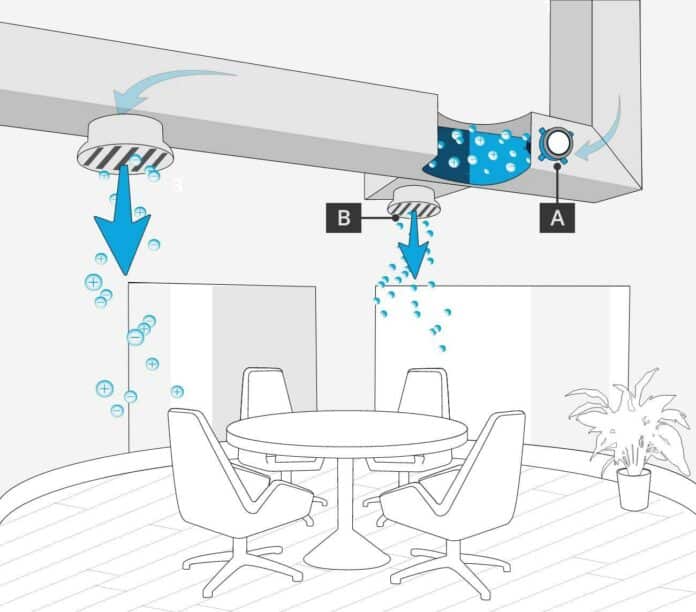The pandemic of SARS-CoV-2 (COVID-19) has brought attention to the urgent need for methods that quickly turn airborne respiratory viruses inactive and break the indoor space transmission cycle. Although most research uses small test enclosures with target microorganisms and ion sources close by, air ions can lower the numbers of viable bacteria, mold, and viruses.
This study aimed to assess NPBI, a soft bipolar ionization technology, as an effective tool for inactivating respiratory viruses transmitted indoors via droplet nuclei. Bipolar ionization is effective at agglomerating ultrafine particles, including viruses, which then fall onto surfaces.
The data for this study was obtained through carefully conducted experiments that aimed to understand the parameters associated with virus inactivation by NPBI.
In contrast to previous investigations, the viral concentrations utilized here ranged from around 100 to 3,500 virus particles/L. A human breath or sneeze typically contains 500 mL. In hospital rooms with infection, concentrations of SARS-CoV-2 can reach 1,800–3,400 virus particles/m3. This is less than the 2–4 virus particles/L employed in this investigation. In this study, the virus concentrations used were consistent with the fact that an infected individual may aerosolize approximately 200–7,000 virus particles through breathing and casual talk within a 2-meter radius.
The device housed Needle Point Bipolar ionization (NPBI) technology. The average concentrations of ions varied between 4,100 and 24,000 per polarity over time trials lasting 30 and 60 minutes. Trials using real-world virus concentrations indicated a far higher reduction rate, with infectivity for Influenza A and B, RSV, and SARS-CoV-2 Delta falling between 88.3 and 99.98% in 30 minutes, while trials using in-excess concentrations showed a decrease between 49.5 and 61.2% in the same time frame.
Scientists noted, “These findings strongly support the addition of NPBI ion technology to building management strategies aimed to protect occupants from contracting and spreading infective respiratory viruses indoors.”
The results of this study lead to four succinct conclusions:
- Bipolar ionization has effectively reduced infectious airborne viruses in large indoor spaces since.
- All ion levels tested significantly reduced virus infectivity.
- The real-world virus concentrations used resulted in rapid inactivation of the respiratory virus compared to artificially high laboratory concentrations.
- The significant space laboratory testing results provide solid evidence of the benefit of NPBI when used to reduce respiratory virus infectivity in occupied spaces.
Journal Reference:
- Sobek E, Elias DA (2023) Bipolar ionization rapidly inactivates real-world, airborne concentrations of infective respiratory viruses. PLoS ONE 18(11): e0293504. DOI: 10.1371/journal.pone.0293504
